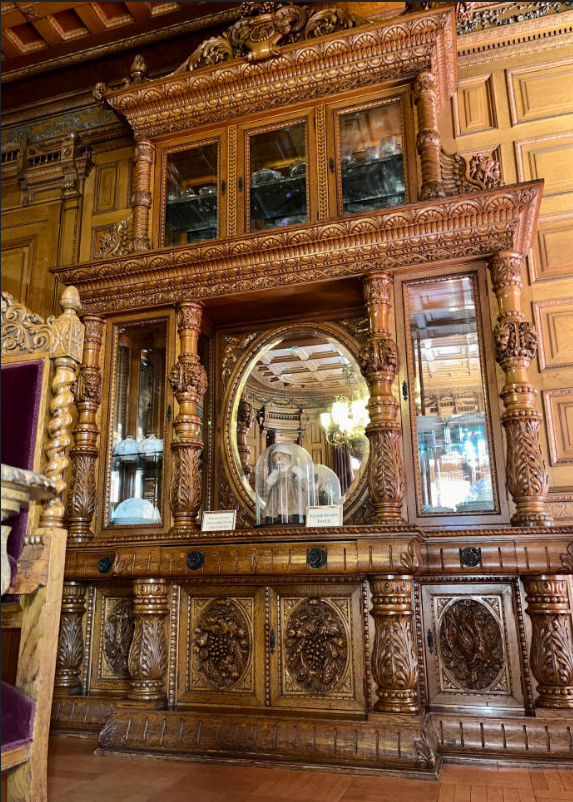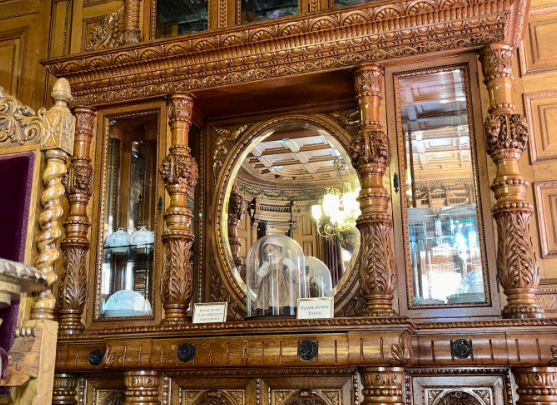Sideboard

| Maker | August Grass |
| Date of Creation | c. 1894 |
| Location | Washington, D.C. |
| Materials | Oak |
| Institution | Heurich House Museum |
| Credit Line | N/A |
| Accession Number | 1988.618.1 |
| Photo Credit | Heurich House Museum |
This sideboard stands tall in the dining room of the Heurich House Museum, almost reaching the near 14-foot-tall ceilings. It is one of several hand-carved oak pieces in the dining room. The sideboard features symbols of bounty, such as cornucopias filled with fruits and vegetables and a freshly caught hare and pheasant. Lions and griffins are also seen on the sideboard’s central columns, symbols which are reflected throughout the room’s carvings. The house was built for Christian Heurich, a German immigrant who was a self-made brewer and one of Washington, D.C.’s most successful manufacturers. Heurich immigrated from Germany in 1866 with the goal of establishing his own brewery, and within a decade he established the Chr. Heurich Brewing Company. Heurich and his second wife, Mathilde Daetz, built and designed their home in the Dupont Circle neighborhood, and it is an excellent example of late Victorian tastes. The dining room in particular is a wonderful example of the Renaissance Revival style of furniture. Heurich often hired household staff and craftspeople who were German immigrants like himself, and the sideboard’s maker was no different. The sideboard was designed and carved by August Grass, a cabinet maker, woodworker, and carpenter with a workshop only a few blocks away from Heurich’s home. Grass was born in Hesse, Germany, in 1828 and immigrated to the United States in 1852. In addition to the sideboard, Grass and his team of apprentices also carved a china cabinet, a dining table, 18 dining chairs, and a smaller sideboard. The walls and ceiling are also decorated in Grass’s oak carvings.

